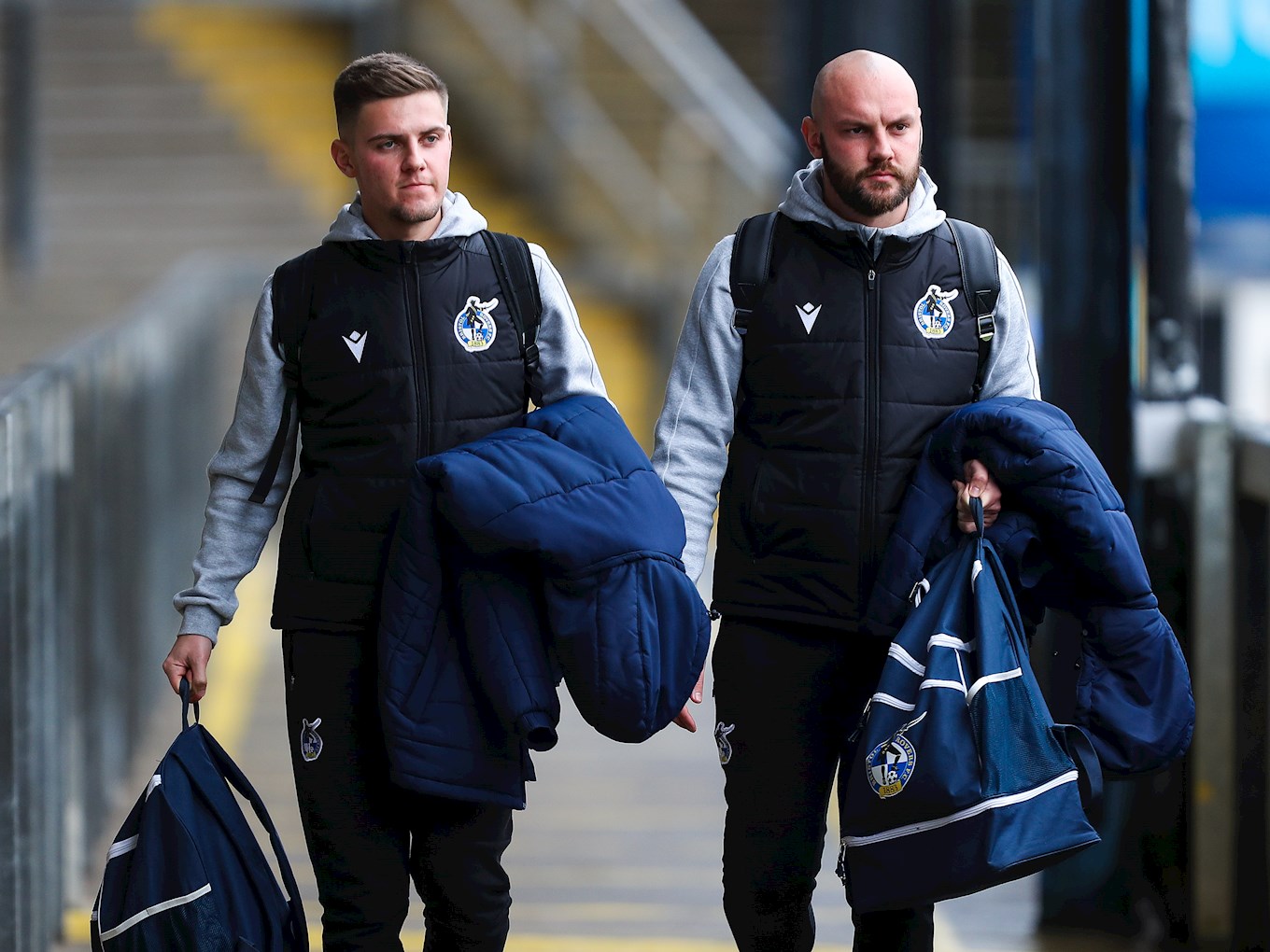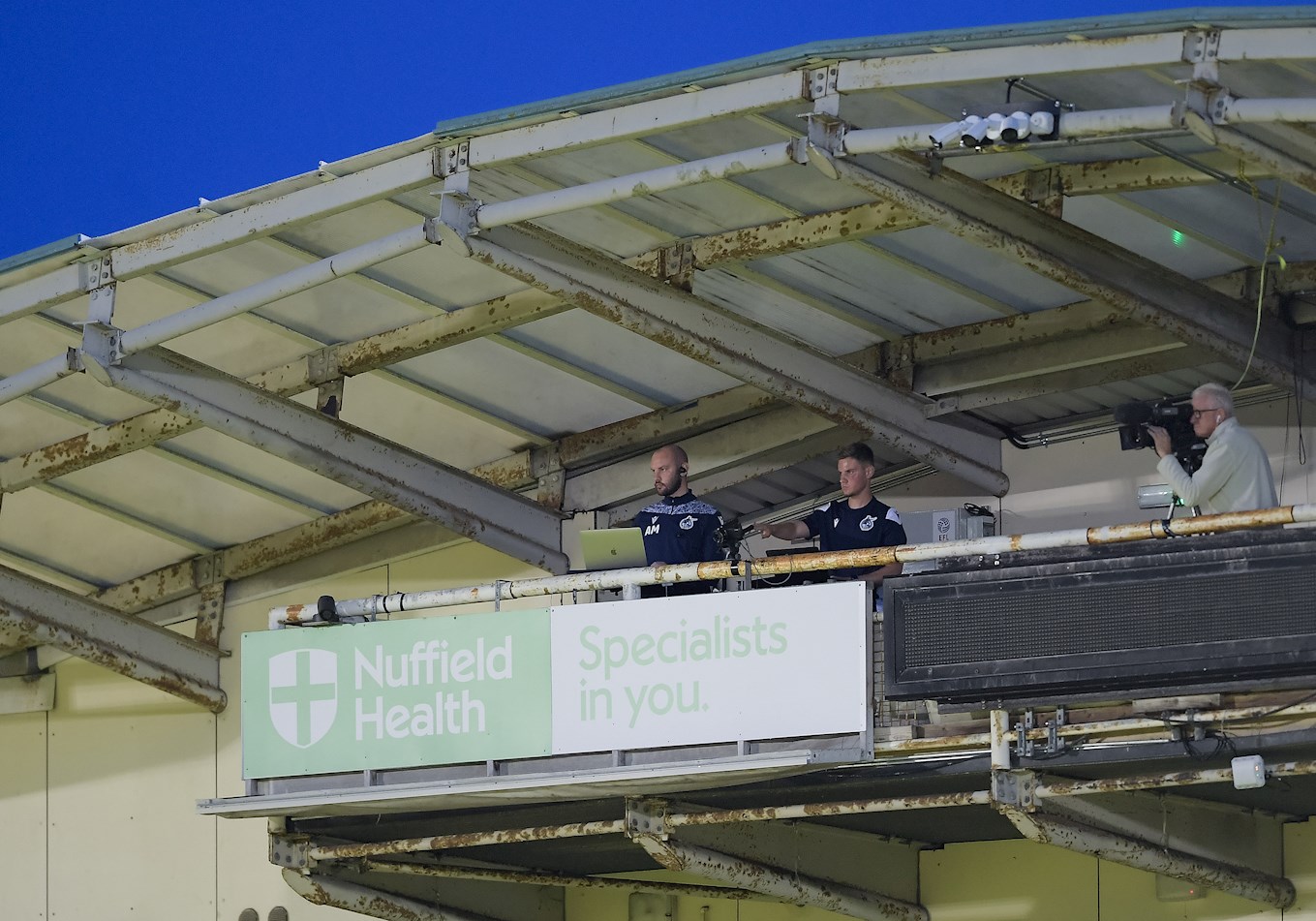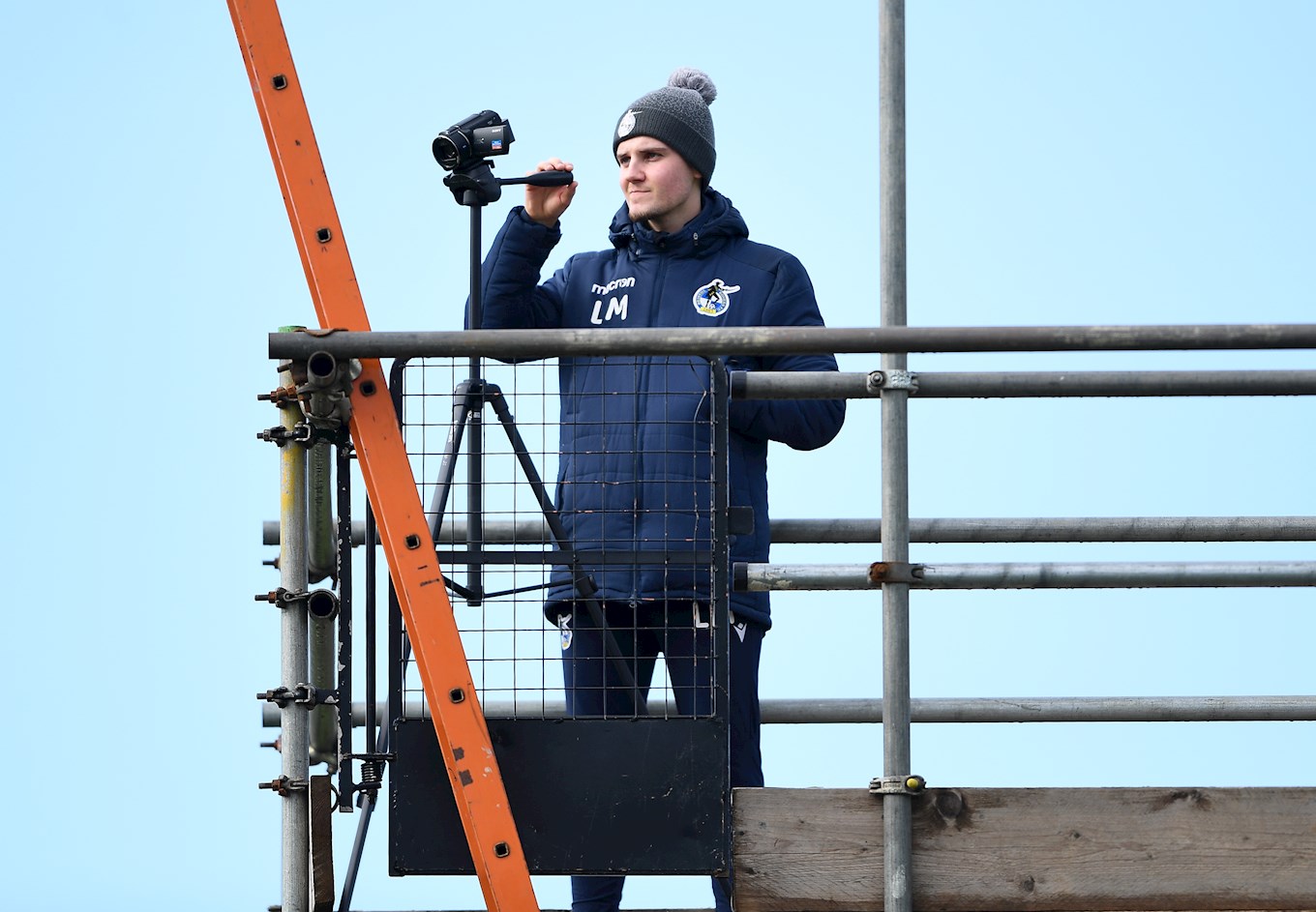The next department in our 'Shining a Light On...' series is the club's Analysis department!
The Analysis department at Bristol Rovers is headed up by Adam Mahoney, ably assisted by his younger brother, Lewis. Myles Lewis completes the department on a home matchday to help out with filming duties and will join the department on a full-time placement for the upcoming 2022-23 League One season.
Head of Analysis Adam joined the club from Swansea City pre-COVID in February 2020 and Lewis joined in the summer before the 2020-21 League One campaign under Ben Garner.

They will often be seen around The Mem carrying their laptops and speaking with the coaching staff and players alike prior to kick-off, at half-time and immediately post-match. However, it’s the work that is carried out inbetween matches that requires most of their time and attention.
When the final whistle goes on one game, attention quickly shifts to the next fixture and ensuring the coaching staff and players are prepared as efficiently as possible.
Analysis is an area of professional football that is becoming more and more popular with social media and technological advancements over the last number of years. The coverage that broadcasters like Sky and BT Sport can produce pre-games, at half-time and immediately post-match has provided fans with unique and detailed insights from pundits, ex-professionals and even match officials, which enhances the overall match experience for the millions of fans watching football matches at home.
The majority of clubs across the football league will have at least one analyst working with the first teams and this number will increase as you go up the leagues. Teams in the upper echelons of English football will boast teams of up to 10 analysts - all working with a specific area of focus which can range from an in-possession analyst, an out-of-possession analyst, a set-piece analyst, a training analyst, a data analyst and a recruitment analyst.
The work carried out by the Mahoney brothers will encompass each of the roles mentioned above from their office inside The Quarters - directly opposite the manager’s office and next to the coach's office, where constant communication and ideas are shared throughout the week. Tactical problems and ideas will be on loop on the many TVs inside the training ground which can spark conversations amongst staff and players in order to find solutions, ranging from upcoming opposition, our previous opponents or from teams in the Premier League and Champions League.
Reflect, Review & Upgrade
The second the final whistle goes on the Saturday 3pm fixture - win, lose or draw - the attention quickly turns to the next fixture in the calendar; whether that be on the following Saturday or a midweek, the process of preparing for the next fixture begins. Following a Saturday game, the Sunday ‘day off’ will be used to re-watch the game from a wide-angle from the day before, as well as compile the post-match stats report for the team and individuals - or if we play away on Saturday, the bus ride home will provide the analysts with time to complete the above tasks. Players and coaching staff will often want to see moments back immediately post-game and this can be done through the analysis software that the club has invested heavily in.
Hudl provides us with our analysis software and the analysts are fortunate enough to be able to fully utilise every product that Hudl can offer us to ensure the players and staff receive everything they may need to win any game of football.
When the squad return to training post-fixture, there will be a full squad debrief, led by manager Joey Barton, with ‘clips’ prepared from the video footage of the game. Head of Analysis, Adam, will sit with the manager on the morning of the meeting and review the clips and decide what will be shown. The Gaffer will often rewatch the game using Hudl’s online platform from home on Sunday and share his clips with the rest of the staff. The meeting will last no longer than 20 minutes and will be conducted on the club's touchscreen TV, again utilising Hudl’s product ‘Studio’. Clips can be drawn on, as you may see on Sky’s Monday Night Football. Once the meeting is concluded, the players and staff close the game down and move on to the next challenge.
In preparation for the upcoming fixture, the analysts quickly get to work and begin the process of breaking down the opposing team's recent fixtures. Along with the coaching staff, they will re-watch anywhere between three and six of the opposition’s fixtures. The fixtures are ‘coded’ using Hudl’s Sportscode and the clips are gathered together. The staff will meet and go through the clips and decide on a game plan as well as how the rest of the week's training will look.
Lewis, along with coach Andy Mangan, will take the lead on reviewing the opposition's set-pieces. Between the two, they will devise routines that they feel will cause problems to certain setups.
Training sessions are filmed every day with a drone which allows the analysts and coaching staff to be able to review all aspects of training from different heights and perspectives, meaning nothing gets missed when the drone is in the sky. The drone will be controlled via an app on a phone as well as having a live stream coming into an iPad that can be rewound, zoomed in on and telestrated (pen tool) - like in the meetings - meaning the players can receive tactical feedback within seconds of them happening on the pitch.
The players will often have meetings most mornings to discuss certain tactical elements that may have been picked up from training the day before; these will be tied in with clips on the upcoming opposition's strengths, weaknesses and the areas in which we feel we can gain an advantage.
LIVE - During the Match
The analysts will be away from the bench and the rest of the coaching staff and will often be seen standing in the gantry at the top of the West Stand. From here, they are able to film the game in ‘wide angle’ alongside the EFL’s ‘broadcast’ feed which you will recognise from watching games on iFollow. Their software allows them to take both feeds into their laptops, which is shared with the coaching staff on the bench via an iPad. During the game, you may spot them wearing AirPods along with Andy Mangan on the bench - they aren’t listening to music but are, in fact, in direct communication throughout the fixture!
They can provide feedback to the bench from their higher vantage point and begin to prepare clips of instances from the first half to show the staff and players at half-time. Being in direct communication with the bench throughout the game is crucial as the analysts can hear all the instructions that are given to the players, as well as offer their own tactical insight that can be shared with the staff if needed.

As highlighted in the photo screenshot (below) from our victory at Vale Park in April, you can see the difference between watching games through a TV ‘broadcast’ feed and through the analysis department’s ‘wide angle’ camera. The analysts are able to see the bigger picture and can see all outfield players in one shot, giving them a greater understanding of what may be going on tactically. The broadcast feed, often the same feed as fans may see if they watch iFollow, narrows the view to only a handful of players, which is useful for moments like set-pieces and incidents during the match.

